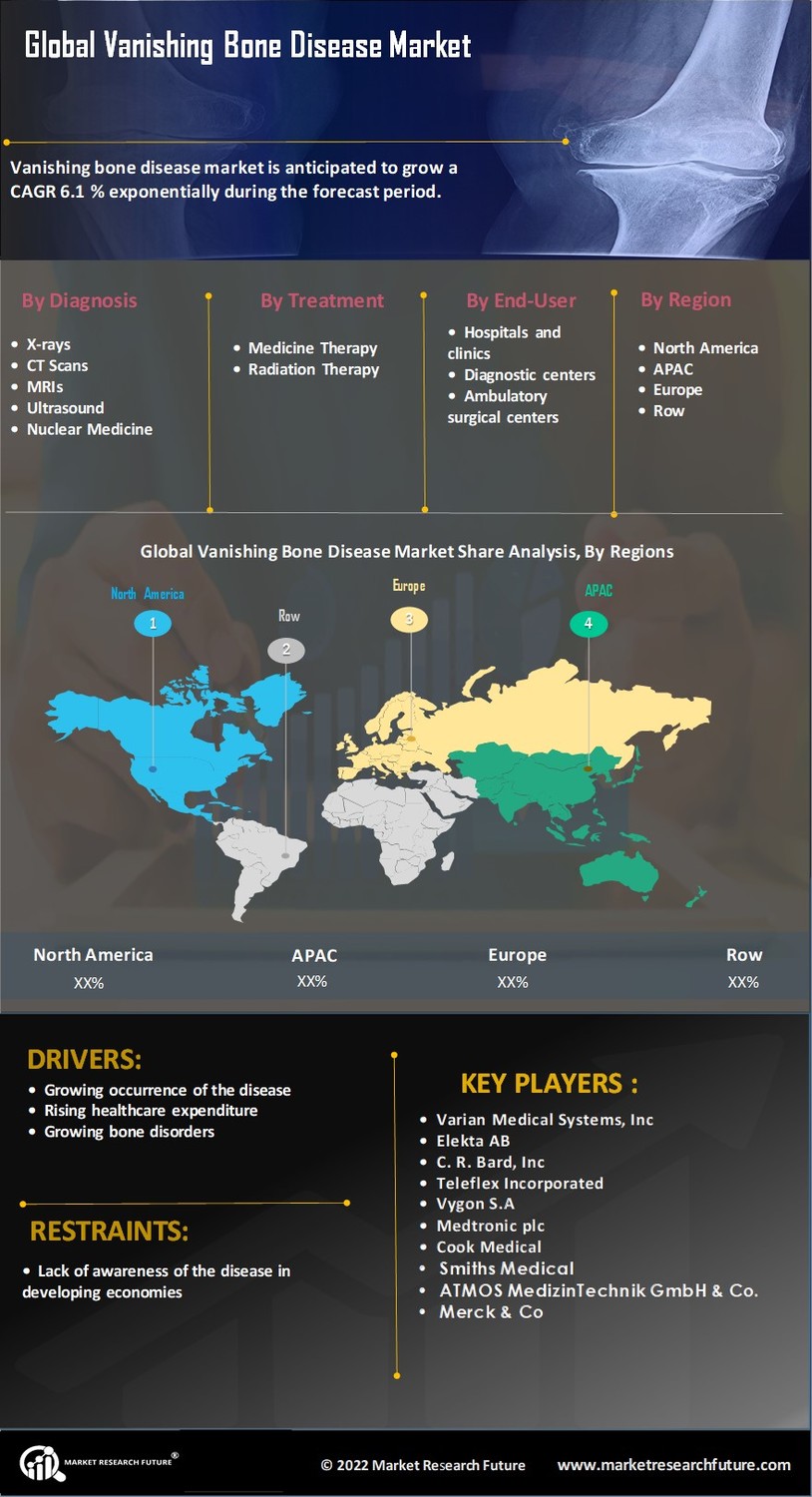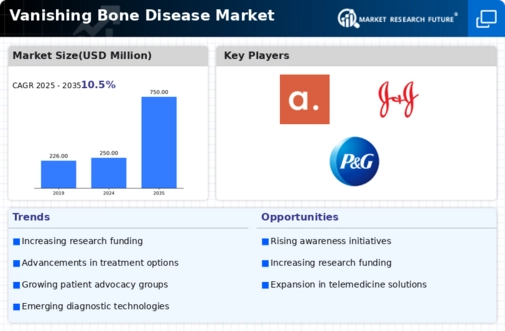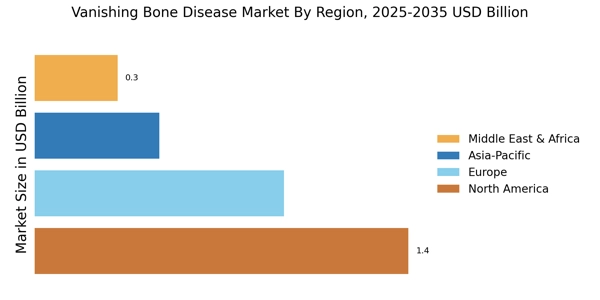Increased Awareness and Advocacy
The rise in awareness and advocacy for rare diseases, including Vanishing Bone Disease Market, is significantly influencing the Vanishing Bone Disease Market. Patient advocacy groups and non-profit organizations are actively working to educate the public and healthcare professionals about the challenges faced by individuals with this condition. This heightened awareness is likely to lead to earlier diagnoses and increased funding for research and development of new therapies. Furthermore, initiatives aimed at promoting clinical trials and patient registries are gaining momentum, which could enhance the understanding of Vanishing Bone Disease Market and its treatment options. As awareness continues to grow, the market may see a corresponding increase in demand for specialized care and innovative treatment solutions.
Innovations in Treatment Modalities
The Vanishing Bone Disease Market is experiencing a surge in innovative treatment modalities, which is a critical driver of market growth. Recent advancements in gene therapy and regenerative medicine hold promise for treating rare bone diseases. For instance, therapies targeting the underlying genetic causes of Vanishing Bone Disease Market are being explored, potentially offering more effective solutions than traditional treatments. Additionally, the development of bisphosphonates and monoclonal antibodies has shown potential in managing bone density issues. The market is projected to grow as these novel therapies gain traction, with estimates suggesting a compound annual growth rate of over 8% in the coming years. This innovation not only enhances treatment efficacy but also attracts investment and research interest, further stimulating the Vanishing Bone Disease Market.
Rising Prevalence of Bone Disorders
The increasing incidence of bone disorders, including Vanishing Bone Disease Market, is a notable driver for the Vanishing Bone Disease Market. As populations age, the prevalence of conditions that affect bone density and structure rises. Reports indicate that approximately 10 million individuals are diagnosed with osteoporosis annually, which may correlate with the emergence of Vanishing Bone Disease Market. This growing patient population necessitates the development of innovative treatment options, thereby propelling market growth. Furthermore, the awareness surrounding rare bone diseases is gradually increasing, leading to more diagnoses and, consequently, a heightened demand for effective therapies. The Vanishing Bone Disease Market is likely to benefit from this trend as healthcare providers seek to address the needs of an expanding patient demographic.
Technological Advancements in Diagnostics
Technological advancements in diagnostic tools are playing a pivotal role in shaping the Vanishing Bone Disease Market. Enhanced imaging techniques, such as high-resolution MRI and advanced bone density scanning, are improving the accuracy of diagnoses for Vanishing Bone Disease Market. These innovations enable healthcare providers to identify the disease at earlier stages, which is crucial for effective intervention. Moreover, the integration of artificial intelligence in diagnostic processes is streamlining the identification of rare bone diseases, potentially leading to better patient outcomes. As diagnostic capabilities improve, the demand for targeted therapies is expected to rise, thereby driving growth in the Vanishing Bone Disease Market. The ability to diagnose conditions more accurately and swiftly is likely to enhance treatment efficacy and patient satisfaction.
Regulatory Support for Rare Disease Research
Regulatory bodies are increasingly providing support for research and development in the Vanishing Bone Disease Market. Initiatives such as orphan drug designations and expedited review processes are encouraging pharmaceutical companies to invest in treatments for rare diseases. This regulatory environment fosters innovation and reduces the time and cost associated with bringing new therapies to market. For instance, the FDA has implemented programs that facilitate the development of drugs for conditions like Vanishing Bone Disease Market, which may lead to a more robust pipeline of treatment options. As a result, the market is likely to experience growth driven by the influx of new therapies that meet the needs of patients suffering from this debilitating condition.


















Leave a Comment